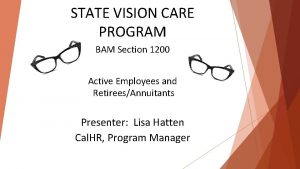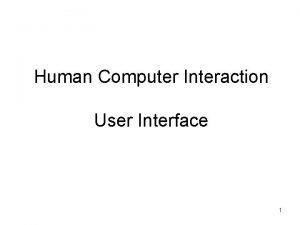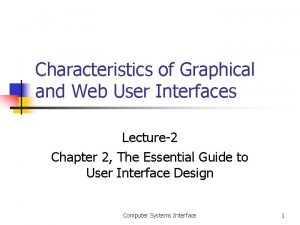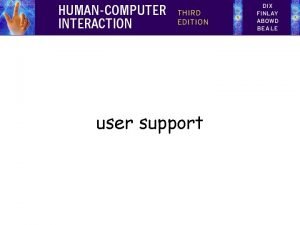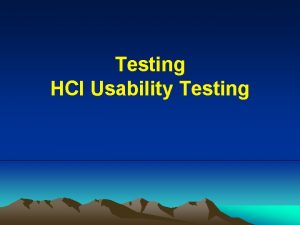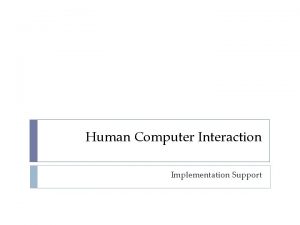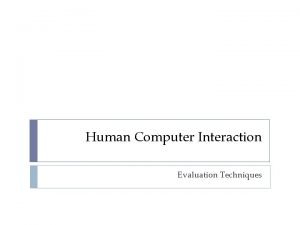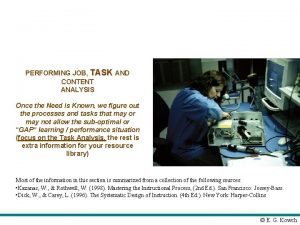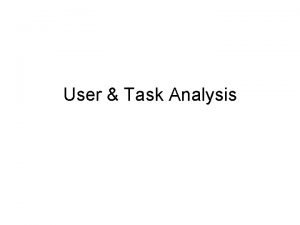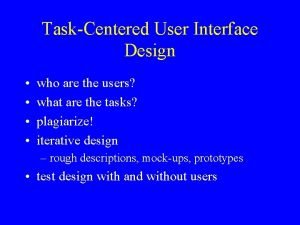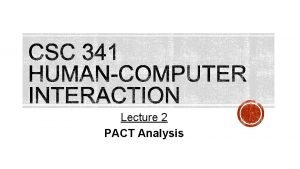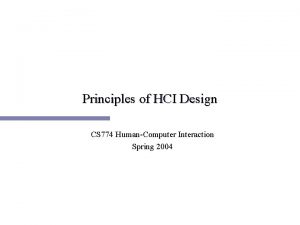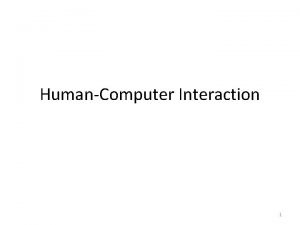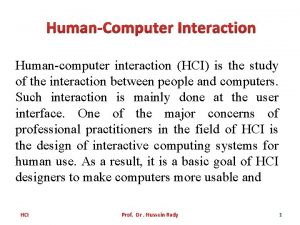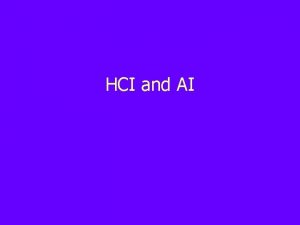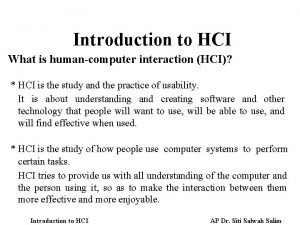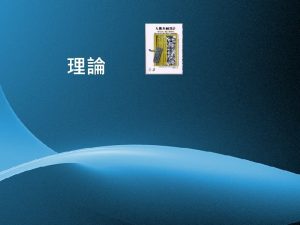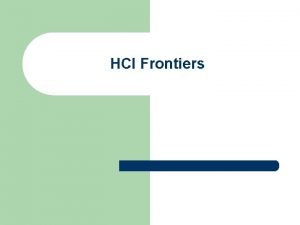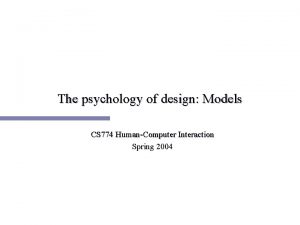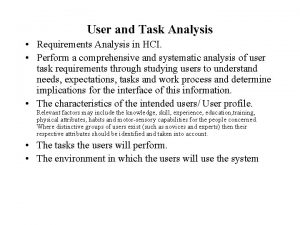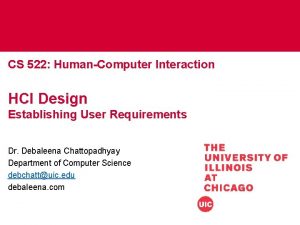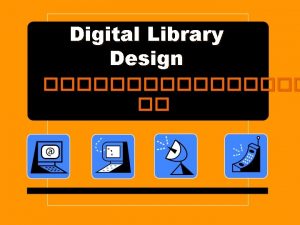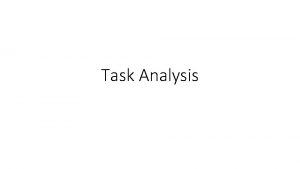HCI User and Task Analysis CS 774 HumanComputer

















- Slides: 17

HCI User and Task Analysis CS 774 Human-Computer Interaction Spring 2004

Our Design Activities n n Establish process Task analysis n n Interface design n Evaluation n LUCID process model Ethnographic observation Scenario development Guideline development Prototyping Heuristic expert evaluation Usability testing GOMS KLM analysis CS 774 Spring 2004

User and Task Analysis n Documenting the user - the who – Who are your users? – Where do they work, what do they know, what are they trying to do, what is the organization like? n Documenting the task - the what – What tasks are the user performing? – What is the goal, what is the action sequence, what are they thinking, what are the problems and opportunities? CS 774 Spring 2004

Real Cases n Kim Derrickson, Sam Droge - biology PDA Suchi Gopal, Jeff Morrisette - NASA Athletic department for recruitment n Helpful to think about real people n n CS 774 Spring 2004

User Analysis n What do you need to know? n Who are your users? Where do they work? What do they know? What do they do? n n n CS 774 Spring 2004

Who are your users? n Demographic analysis – – – n Age, income, class, country, company (hey! reg cards) Who and where are they? What subgroups do you have? Diversity issues? Organizational analysis – Who does the real work in the company? – Don’t interview the manager who thinks they understand, interview the employee who does the work – (Talk to the manager as part of SE, not HCI) CS 774 Spring 2004

Where do they work? n Where will they use the software? – – – n Home office? Personal office? Cubicle? Busy space, like emergency room? Hiking? What constraints does the place add to the UI? – Lighting, sound, attention, gloves, . . . CS 774 Spring 2004

Studying the space n n Photograph or videotape the space (w/ permission) What do you see? – – – n Work products? Access to manuals? Web? Post-it notes? Crib sheets? Awkward desks? Distractions? Phone? Other communication? Social environment. Where any co-workers? CS 774 Spring 2004

What do they know? n Know thy user CS 774 Spring 2004

What do they know? n Computer expertise – How comfortable/familiar are they with the system you plan to use? (Can you trust their self reports? ) n Cultural constraints – What background knowledge/biases may they have? n Task knowledge and concern – – – How long have they been doing this? What mental models do they have? Vocabulary? Do they share your goals? Support the project? CS 774 Spring 2004

What do they do? n What is their job description? – Are you automating a primary or secondary task? – What level of care/concern do they have? n What is their day like? – Do they do this all day, or vary their routine? – How long do they have to perform the tasks you are considering automating? – Do they use the system infrequently, preventing habituation? CS 774 Spring 2004

Data Collection n User surveys – Send ‘em a survey n Site visits – Go spy - watch them work n Focus groups and interviews – Talk to them n Exploratory prototypes – Show ‘em what you’re proposing CS 774 Spring 2004

Site Visits n Advantage over surveys and off-site interviews – No problems with false memory or reporting – Can take notebook, camera, camcorder (permission!) n Watch user perform tasks – Talk to them, solicit what they’re thinking – If you can’t talk to them, videotape them and review the videotape with them afterwards to find out what they were doing and thinking – Take notes CS 774 Spring 2004

Task Analysis n n Start from your high concept What are the tasks involved? List them. – Routine, frequent tasks? – Infrequent tasks? n Is the task new? – Can you observe the current method? – How does the automated task relate to existing ones? n Who does a particular task? – Task matrix CS 774 Spring 2004

Task Scenarios (Use case) n n Written description of task Different levels of formality – – – n Scenario - basic script Sequence - task broken into steps Flowchart - task analyzed into sequences and options Include Norman’s goal level – Don’t focus too soon on specific intentions/actions CS 774 Spring 2004

Bio. PDA- Scenario 1 n A field botanist goes out to survey a small flowering plant growing in the pine barrens east of Baltimore. She takes a backpack with notepad, PDA, field guide and ruler. When she gets to the field, she consults previous notes to remember the transit she took the previous trip. She then records general facts like temperature, clouds, She starts down the transit, stopping whenever she sees the plant. She notes if the plant has flowers or seeds, has any special conditions like yellow leaves, insect nibbles, insects on plant, and so on. She measures and records the plant height and width. She does this through the entire transit. She then takes the information home to analyze on a PC statistical package. CS 774 Spring 2004

Bio. PDA - Scenario 2 n A ornithologist goes out to observe nesting bird behavior early in the morning. He drives out to a blind where he hunches down in relative dark to watch birds come and go from a nest. He uses a field scope on a tripod to watch the nest and observe when the parent birds come and go, when they feed the chicks, and what behaviors they exhibit (calls, movements) between each other and the chicks. He records the activity, the bird involved, the time and the duration for each event. The events are all categorized in advances, so he uses codes. Some days he will pick up the chicks to check for growth and signs like diseases. CS 774 Spring 2004
 Calhr 774
Calhr 774 Nyogel 774vh
Nyogel 774vh Task analysis in hci
Task analysis in hci Hci user interface
Hci user interface Characteristics of graphical user interface in hci
Characteristics of graphical user interface in hci Type of user support
Type of user support User testing in hci
User testing in hci User characteristics in hci
User characteristics in hci Implementation support in hci
Implementation support in hci What are input output channels in hci
What are input output channels in hci Automated analysis in hci
Automated analysis in hci Single user and multiple user operating system
Single user and multiple user operating system Single user and multiple user operating system
Single user and multiple user operating system Task analysis and content analysis
Task analysis and content analysis User task
User task Task centered user interface design
Task centered user interface design Tiered task bias task
Tiered task bias task Pact analysis for mobile app
Pact analysis for mobile app
